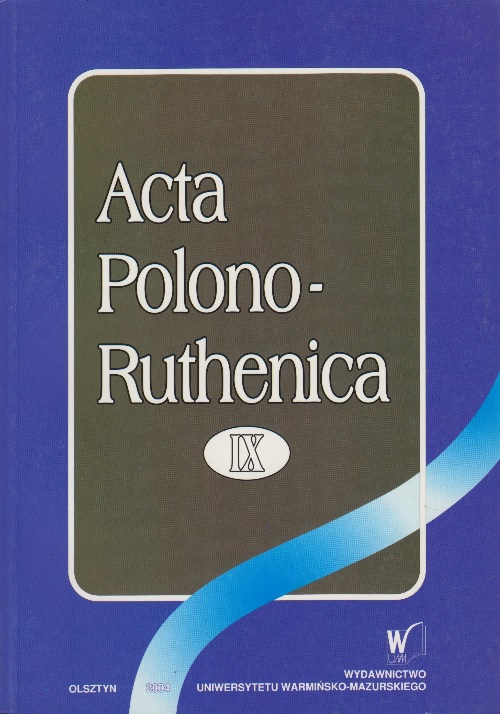Polonizmy w ukraińsko-łacińskim (słowiano-łacińskim) rękopiśmiennym słowniku Arseniusza Koreckiego-Satanowskiego i Epifaniusza Sławinieckiego z XVII wieku
Polish borrowings in the Ukrainian-Latin (Slavic-Latin) hand-written dictionary by Arseniusz Korecki-Satanowski and Epifani Slawiniecki (XVII c.)
Author(s): Jarosław KarzarnowiczSubject(s): Language studies, Language and Literature Studies, Foreign languages learning, Eastern Slavic Languages, Philology, Translation Studies
Published by: Wydawnictwo Uniwersytetu Warmińsko-Mazurskiego w Olsztynie
Summary/Abstract: The article describes Polish language elements in the Slavic-Latin dictionary (some call it Ukrainian-Latin) by E. Slavinecki and A. Satanovski. The dictionary was assembled in Moscow but undoubtedly the idea content of it belongs to the Mogiła Academy in Kiev. It numbers about 7 500 lexemes, 540 of which can be considered Polish borrowings. In the research the dictionary of the Polish language by Grigory Knapski (presumably published in 1643) was used. The lingu istic material of the Slavic-Latin dictionary is distinctly divided into three groups: 1. Words of Western European origin, borrowed with the aid of the Polish language, phone tically and morphologically adapted; 2. Words (often of panto-Slavic origin) with the Polish phonetic and morphological charac teristics (so called „quotes”); 3. Words (often of panto-Slavic or Old Russian origin), the meaning of which had changed under the influence of the Polish language (semantic borrowings). Researches of the Polish-Russian language contacts point to similar lexemes in the Russian language of that period that were undoubtedly borrowed from Ukrainian.
Journal: Acta Polono-Ruthenica
- Issue Year: 2004
- Issue No: IX
- Page Range: 187-200
- Page Count: 14
- Language: Polish

